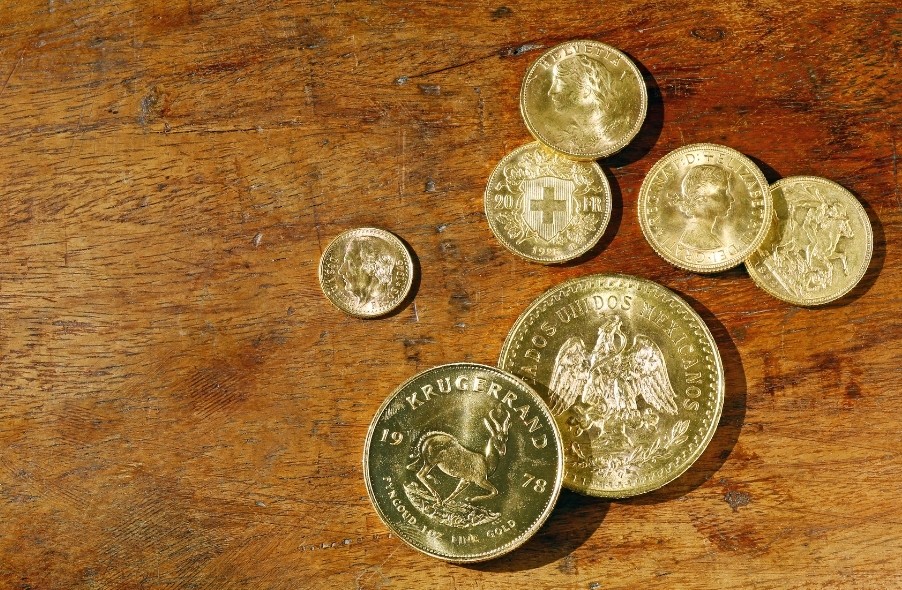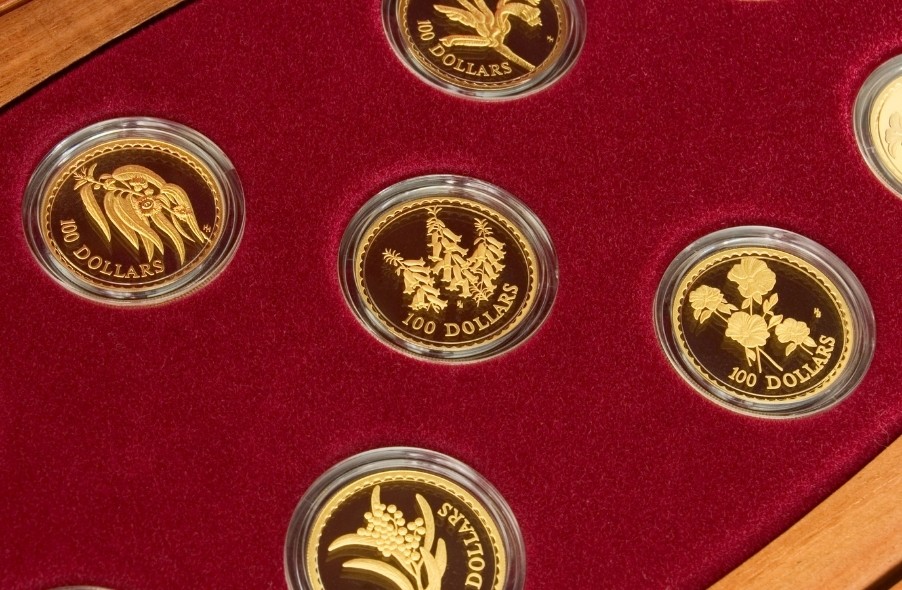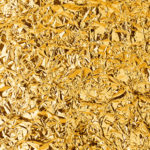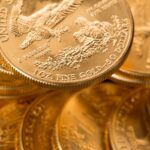If you collect coins or know anything about coin collecting, then you might have heard of a proof coin. These rare coins are popular among coin collectors and can be worth a lot of money, but what are they?
Proof coins are specially minted and even more beautiful, valuable, and rare than traditional uncirculated coins you can buy from a mint.
In this article, we will tell you more about what proof coins are and what makes them so special and unique. Keep reading to learn more!
What is a Proof Coin?
A proof coin is a rare, uncirculated coin that a mint has specially created each year. A proof coin has never entered public circulation, nor has it served as currency in the market. Proof coins are rarer than regular uncirculated coins and are collectible items.
Proof coins are samples of new edition coins and that many countries create and in nearly all currencies. Traditionally, mints produced these coins before mass-producing a new coin to make sure that it has correctly minted all parts of the coin. Mints archive them for record-keeping but have also created proof coins specifically for collectors.
In the United States, proof coins represent each type of coin that a U.S. Mint has produced that year. These coins include regular pennies, nickels, dimes, quarters, and any specialty coins for that year, such as special edition quarters, half-dollar, or dollar coins.
Proof coins are usually shinier and more detailed than regular coins. The name “proof” actually refers to the finish on the coin. Before the coins have the details printed on them, the blank coins are hand polished and handled with care to ensure the best “strike” or printing.
Because so few proof coins get produced, they are scarce and valuable.
Differences Between Proof Coins and Uncirculated Coins
Why are proof coins so much more rare and valuable than uncirculated coins, and what makes them unique? While it is true that both proof coins and uncirculated coins are special and do not enter the market, the two types of coins have different methods of production.
Uncirculated coins have a slightly different finish that makes them shinier than regular circulated coins but otherwise go through the same minting process. Proof coins have a lengthier creation process that we will discuss in the next section. It is this process, however, that sets them apart from uncirculated coins and makes them rarer and more memorable.
How Does a Mint Make a Proof Coin?

During the process of producing proof coins, the coinmakers take extra time to make sure everything about the coin is perfect. The method of creating a proof coin is a bit more complex than for making uncirculated and circulated coins.
Coinmakers hand-polish, treat, and clean proof coins while they are blank. Then, the coins enter the press, where a machine “strikes” them with an image on each side. The striking process for proof coins includes specialty polished dies, and each coin gets struck a minimum of two times.
This careful process ensures that the coin will be gleaming and that the engraving on the coin will be sharp and clear. The flat portion of the coin will be so shiny that it will look more like a mirror than a coin.
Workers then place each coin in a case and give it a certificate of authenticity. This protection is essential for collectors, as the case prevents the coin from getting fingerprints on it. The certificate of authenticity is vital for reselling or estimating the value of their collection.
History of Proof Coins
Coinmakers originally created proof coins as a way to test coins before producing them in mass quantities. The proof coins acted as a sample to determine if there were any mistakes or problems with the die before minting the rest of the coins. Because proof coins served as the prototypes, these coins turned out better than the mass-produced ones.
Coinmakers at the mints kept some of these prototype coins for archival purposes so that they would have a record of each coin’s development and how it changed throughout time. However, they usually made several proofs, so the employees at first took the leftover coins home.
Eventually, the popularity of these coins grew since they were distinctive. Everyone wanted their own unique coin. From there, the mints started creating proof coins to sell to collectors and coin enthusiasts.
Why You Would Want a Proof Coin
Most people interested in proof coins are coin enthusiasts and collectors. You would not want to enter these coins into circulation, as that would cause their values to drop dramatically. Even if you are a coin collector, you might ask why you would want to purchase a proof coin instead of an uncirculated coin?
Both proof and uncirculated coins indeed look beautiful and untouched. There are several differences between the two types of coins in terms of their manufacture in the U.S. Mint. These differences lead to slight variations in appearance in the final product.
A proof coin will look sharper and shinier than an uncirculated coin. That is not to say that uncirculated coins are dull, just that proof coins get struck twice and have an exceptional finish that makes them stand out.
Proof coins are scarcer than uncirculated coins, have a higher value, and have a reputation as a better collectible item. However, if you are just getting started in coin collecting or are looking to invest in some coins, uncirculated ones are a great option.
Proof Coin Varieti es
es
The United States has been producing proof coins since 1821. The manufacture of the earliest proof coins did not necessarily follow the same exact process as those today, but they have lasted if collectors or archives have preserved them well.
Proof coins that you can buy today come in sets. This practice in the U.S. started in 1950, and since that year, people have been able to order sets that include one proof of every coin minted in a particular year.
Throughout the history of the U.S. Mints, there have been proof sets that people could purchase as well. However, not all of these are available from the Mints today. If you want a specialty proof set that has gone out of print, you will need to find a collector willing to sell it.
Some of the most iconic specialty proof sets are as follows.
50 State Quarters
From 1999 to 2008, the United States Mint produced quarters with backs that corresponded to each of the 50 states. Many people collected these quarters, even the ones within circulation. Each state had a quarter produced for about ten weeks, which equaled about five state quarters made every year.
Each year, you could purchase a proof set of the five state quarters for that year. If you wanted to acquire one of these proof sets today, you would need to find someone selling them, as you cannot purchase these from the U.S. Mint anymore.
Lewis and Clark Nickels
To commemorate the 200th anniversary of the Lewis and Clark Expedition, the United States Mint made specialty Lewis and Clark nickels from 2004 to 2005. Like the 50 state quarters, proof sets of these nickels were only available for purchase from the Mint in the years of their creation.
“America the Beautiful” Quarters
Another set of specialty quarters included the “America the Beautiful” quarters that the Mint produced from 2010 to 2021. Each quarter represents one national park or monument in the United States. Since the Mint is still creating these today, you should be able to get a proof set of some of these quarters directly from the Mint.
Reverse Proof Coins
The United States has started producing reverse proof coins in recent years in addition to traditional proof coins. The Mint creates reverse proofs in the exact same way as regular proof coins, except that the finishes are in reverse.
In a reverse proof coin, the raised part of the coin with the detail, imagery, and text has the mirror-like finish, while the flat background has a more muted, frosted finish. These proofs are also available for purchase through the United States Mint.
Wrapping Things Up
Proof coins serve as fantastic collector’s items and are extremely valuable due to their rarity. Proof coins differ from regular uncirculated coins because of their mode of production, making them unique.
The designs and details on a proof coin stand out more than on uncirculated or circulated coins. They also have a shinier finish, giving them a high-quality glossy look. If you are interested in purchasing a proof coin or proof sets, you can check out the United States mint or other coin dealers online.
At the U.S. Mint’s website at https://catalog.usmint.gov/, you can buy a 2021 Silver Proof Set for $105. This set includes seven proof coins minted this year at the United States Mint at San Francisco.
For more information on investing in gold and gold-backed cryptocurrencies, contact Learn About Gold’s investment specialists. We are your best resource for all gold investments. We will give you the information you need and refer you to credible gold investment platforms based on fees, special offers, and reviews.
Check out our other blog posts to learn more!





